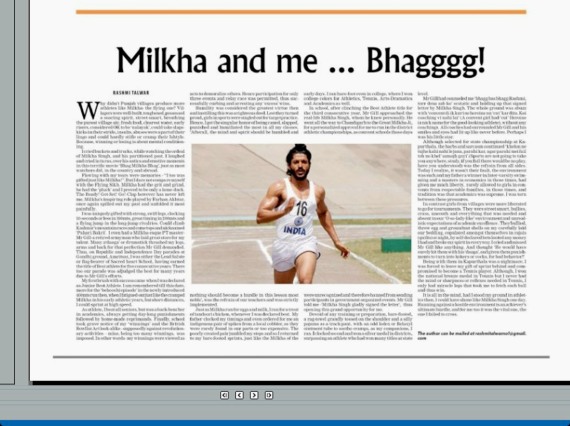Magnificent 180-year-old Panj Mandir screams for help
Rashmi Talwar
Panj Mandir in Fatehgarh Churian, Gurdaspur, is a jewel of Maharaja Ranjit Singh’s reign. It is the maternal hometown of Rani Chand Kaur, wife of Kharak Singh, son of the Maharaja
Straddling streets of New York, seeing the ancient melt so smoothly; antiquated churches virtually like “flowers” amidst sky-scrapers, I was gripped by shame. The scene reminded me of our callousness towards our rich heritage in India. Where graffiti defaces marvellous frescoes, a crude nail has gouged out an eye; a paan-spit splashed red blob is the depths of apathy towards our glorious past.
If the enthralling grandeur of Amritsar’s GoldenTemple is credited to Maharaja Ranjit Singh, Panj Mandir is another marvellous jewel, ingloriously unrecognised of the Maharaja’s reign. It is some 30 km from the GoldenTemple, in Fatehgarh Churian Gurdaspur, the maternal hometown of Rani Chand Kaur, wife of Kharak Singh, son of the Maharaja.
Attributed to Rani Chand Kaur, the Panj Mandir’s structure below the dome is a unique zigzag, created by precision laying of specially made bricks, inspired by Solanki architecture and Baoli art of step-creation. Indo-Mughal, Sikh architectural confluences have amalgamated in this marvellous structure with four mandirs marking four directions and a sanctum sanctorum.
The inner and outer fort-like walls and the temple entrances are studded with jharokhas in bas relief, reminiscent of Rajasthani architecture. Remarkable, rare frescoes tell stories of yore in exquisitely carved niches, so resilient as to stand bright till today. “I am too scared to step on the brick flooring as I feel my shoes may erase some traces of rich heritage”, an American’s remark disgraced me once.
Our magnificent heritage could not only be made self-sustaining but its optimum utiliSation could accrue prosperity and income. “Tourism is created with ideas and here we sit on a virtual mountain of treasure and let it be robbed or crumble,” laments an expert.
Beautiful artwork
Heritage experts believe the temple may have been built around 1830 and is thus nearly 180 years old. Much of the lower portions of frescoes is white-washed, and the present caretaker Pt. Mohinder Kumar, who religiously cleans and secures it from encroachment, may beautify it with bathroom tiles and multicolours, out of sheer ignorance. The temple’s foundations are already being dug for new housing, emerging adjacent to it.
The wealth of resplendent frescoes comprises episodes of Krishan stealing bathing gopis clothes, Yashoda Maiyya churning butter with a madhani. Frescoes also show Guru Nanak with disciples Bhai Mardana and Bala, Brahma-Vishnu-Mahesh, Saraswati-Lakshmi, Radha-Krishan, Shiv-Parvati-Ganesh, Kartikeya-on-Peacock, Ganga emerging from Shiva’s locks. Vishnu reclining, with Nag-chatri in ocean, Durga Mata aloft a lion, valiant horse-rider, episodes of Narsingh, Prahlad, Baba Balaknath, Hiranyakashyap. These splendid frescoes-artifacts are facing erosion, their ruination imminent, if timely protection evades them.
Tertiary temples are devoted to Surya, Durga, Shiva and Kartikeya. Inside the sanctum sanctorum, Lord Ram with Sita, Lakshman, Bharat and Shatrughan share space with Krishna-Radha.
This combination of gods goddesses on one pedestal is rare. Dr Subhash Parihar, an expert on historical structures, comments, “People were secular, many ancient gurdwaras-temples have frescoes displaying episodes of Hindu gods-goddesses.”
The frescoes resemble Chamba’s famed Rang Mahal paintings in Pahari style, ones in Sheesh Mahal near Ramnagar, Jammu, also seen in Dera Sahib Gurdwara, Lahore and temples around Katasraj in Pakistan.
The Baradari entrance with symmetrical twin Jharokas on both sides of angular walls open to the road, are in ruins. The rampart walls are embellished with exquisite Jharokas, geometrical patterns, flowers waves, carved canopies in bas relief complete with exquisite corbels. But the outer wall is wearing, as entire area is speedily coming up with housing.
Dr Balvinder Singh HoD Guru Ram Das School of Planning in GNDUniversity, comments: “The mandir resembles Konarkin Orissa and South Indian temples. The use of Nanakshahi bricks makes it unique.”
Mandirs are conjoined by a fort-wall with steps and walk-ways throughout the terrace, are peeling. One is covered with green climber and a syntax-watertank supplying water to a tiled bathroom constructed inside the ancient complex. Locals wait for a collapse, to grab the land. There were seven mandirs, two of which were outside the main complex, of which one exists in a dilapidated condition, locked and other, erased.
Panch-mukhi lingam
A rare five-headed or Panch-mukhi lingam in the temple represents five elements, five senses, five organs, five powers and the five temples of Panj Mandir. The five heads also signify the five aspects of Shiva corresponding to five holy places in Hinduism.
Ancient sarovar
About 120 yards from Panj Mandir stands a massive sarovar alongside Talab Wala mandir, believed to be built by Rani Chand Kaur to mark the birth or dastargiri of her son Kunwar Naunihal Singh. Some say, Nanakshahi bricks used for the mandir and sarovar were brought from Lahore via a human-chain. Almost 15 feet in depth, with 10 running steps throughout, the sarovar, 225 feet by 230 feet, has arched exit-entry water-points, and lies neglected.
FIRST PUBLISHED IN THE TRIBUNE ON AUGUST 25TH 2013
URL:http://www.tribuneindia.com/2013/20130825/spectrum/society.htm















Recent Comments